Extensor digitorum longus muscle Anatomy, Origin, Insertion Function, Exercise
Table of Contents
Introduction
- The Extensor digitorum longus is a feather-like muscle of the anterior (extensor) compartment of the leg. Besides the extensor digitorum longus muscle, this compartment also contains the tibialis anterior, extensor hallucis longus & fibularis (peroneus) tertius muscles.
- Since all these muscles cross the dorsal aspect of the ankle joint, their general function is the dorsiflexion of the foot. As the extensor digitorum longus also crosses the subtalar, metatarsophalangeal & interphalangeal joints of the foot, it also Everses the foot & extends the toes
Origin and insertion
- It arises from the lateral condyle of the tibia; from the upper 3-quarters of the anterior surface of the body of the fibula; from the upper portion of the interosseous membrane; from the deep surface of the fascia; & from the intermuscular septa between it & the tibialis anterior on the medial, & the peroneal muscles on the lateral side. Between it and the tibialis anterior are the upper portions of the anterior tibial vessels & deep peroneal nerve.
- The muscle passes under the superior & inferior extensor retinaculum of the foot in company with the fibularis tertius. It divides into four slips, which run forward on the dorsum of the foot, & are inserted into the second and 3rd phalanges of the 4lesser toes.
- The tendons to the 2nd, 3rd, and 4th toes are each joined, opposite the metatarsophalangeal articulations, on the lateral side by a tendon of the extensor digitorum brevis. The tendons are inserted in the following manner: each receives a fibrous expansion from the interossei & lubricants, & then spreads out into a broad aponeurosis, which covers the dorsal surface of the 1st phalanx: this aponeurosis, at the articulation of the first with the second phalanx, divides into three slips—an intermediate, which is inserted into the base of the second phalanx; & two collateral slips, which, after uniting on the dorsal surface of the 2nd phalanx, are continued onward, to be inserted into the base of the third phalanx.
Function
- The primary function of the extensor digitorum longus is to extend the lateral 4 toes at the metatarsophalangeal joint. This means that when acting independently, it is unable to extend the whole length of the toes, extending only at the metatarsophalangeal, while at the interphalangeal joints the toes remain flexed. However, contracting together with lubricants which are the main extensors of the interphalangeal joints, this muscle contributes to extension at every joint between the bones of the lateral 4 toes.
- Working with tibialis anterior, extensor hallucis longus & fibularis Tertius, this muscle participates in dorsiflexion of the foot when their proximal attachments are fixed. When the distal attachments are fixed & the body is in the anatomical position, all 4 muscles bring the trunk & lower limb to the front. This function moves the body weight-bearing point from the proximal to the distal portion of the foot.
- All of these actions are important for the gait cycle; the dorsiflexion angulates & lifts the foot above the walking surface, while the toe extension keeps the toes extended until the heel hits the ground.
Relations
- The extensor hallucis longus muscle is the most lateral of all the muscles in the extensor compartment & located laterally to the tibialis anterior & extensor hallucis longus. Anterior tibial artery & vein pass between the extensor digitorum longus & the tibialis anterior.
- Being within the inferior extensor retinaculum, the distal portion of the muscle crosses the anterior part of the ankle joint. While traversing the retinaculum, the tendon of extensor digitorum longus sits medially to the tendon of fibularis tertius & laterally to the extensor hallucis longus tendon. In the dorsum of the foot, tendons of the extensor hallucis longus muscle course superficially to the extensor digitorum brevis muscle.
Nerve supply
The extensor digitorum longus is supplied by the deep fibular nerve (L5, S1), a branch of the common fibular nerve.
Variations
- This muscle varies considerably in the modes of origin & the arrangement of its various tendons.
- The tendons to the second & fifth toes may be found doubled, or extra slips are given off from one or more tendons to their corresponding metatarsal bones, to the short extensor, and to 1 of the interosseous muscles.
- The slip to the great toe from the inner tendon has been found.
Blood supply
- The leg part of the muscle is supplied by 2 arteries of the leg; the proximal part is supplied by the anterior tibial artery, while the distal part receives blood from the fibular artery.
- The tendons of the muscle are vascularized by the anterior lateral malleolar, lateral tarsal, metatarsal, plantar & digital arteries.
Assessment
- To assess the extensor digitorum longus toes 2-5 are dorsiflexed against resistance
Clinical importance
- The Extensor digitorum longus tends to be overactive & tight to compensate for an inhibited tibialis anterior. Stretching & myofascial release of the muscle together with activation tibialis anterior is indicated to regain muscle balance & improve functional ankle dorsiflexion.
- If Extensor digitorum longus muscles are tense or carry trigger points, it can cause various ailments & pains.
- Tensions in the EDL often lead to lower leg pain &local sensitivity to pressure.
- trigger points can trigger pain in the area of the ankle & foot.
- Additional symptoms:
- Anterior ankle pain
- Bunion
- Dorsa forefoot pain
- Dorsal lesser toe pain
- Pain patterns of trigger points for the Extensor digitorum longus are:
- Dorsal forefoot pain
- Metatarsal head pain
- Bunion
- Anterior ankle and dorsal great toe pain⠀
- Trigger points are mainly activated through overload in sports.
- Jogging in general or jogging on uneven or slippery floors can quickly activate trigger points.
- In normal jogging, it is the monotonous motion sequence that triggers the overload of individual muscle fibers.
- Especially if you are not used to this kind of stress, give the muscle too little time to adjust or do not perform balancing activities such as massages & stretches. On uneven floors, the muscle requires to stabilize the ankle more heavily, which can overload it, too. On a slippery floor, the toes slip slightly backward with every step. This is a high stimulus for the muscle & may overload it. Other factors that development of trigger points are instabilities at the ankle joints.
- Take the quadruped stand.
- Place the foam roller under the shinbone.
- Shift some weight to the side to be massaged in order to push the roll into the muscle.
- If you don‘t shift the weight, you will as a result only press on the shinbone.
- Execute short & slow rolling movements over the entire length of the muscles & look for painful tensions.
- Once you find one, roll sometimes from just prior to just behind the painful spot.
Extensor digitorum longus muscle stretching exercise
- Standing Shin Stretch
- Kneeling Shin Stretch
- Seated Shin Stretch
- Lying Shin Stretch
- Toe walking
- Ankle ABC’s
- Standing Stretch
Standing Shin Stretch

How to do:
- Stand tall. You need to use a hand on a wall & other support for balance.
- Slightly bend both knees.
- The right foot remains squarely on the floor. The foot is to be stretched or the left foot is placed just behind this stable & right foot, with the toe of the left foot touching the ground.
- Keeping your toe firmly on the ground, pull the left leg forward so you feel a stretch from the top of your left foot through the shins.
- Once you feel a stretch, hold it for 10-30 seconds.
- Repeat the stretch with the right foot.
Kneeling Shin Stretch
- How to do: Kneeling can be used for gradually stretching the shins.
- You must have good knee flexion to perform this stretch as you will be sitting on the heels. If it causes pain in the knees, don’t perform it.
- Kneel on a mat with the tops of the feet flat on the ground & the buttocks over the heels.
- You feel stretching on the shin.
- Hold for 10-20 seconds.
Seated Shin Stretch
- How to do: Sit on a chair.
- Drop the knee towards the floor so the toe of your foot is extended into the ground as in the standing stretch.
- gradually pull forward while the toe is planted on the floor, similar to the standing stretch but seated.
- Hold for 10-20 seconds.
- Repeat for both feet.
Lying Shin Stretch
- How to do:
- The lying Shin Stretch stretch is similar to the lying quadriceps stretch.
- Lie on the one side. Now, bend the upper knee so your foot is behind the back.
- Reach back & grasp the forefoot, pulling it towards the back.
- Hold for 10-20 seconds.
- Repeat for both feet.
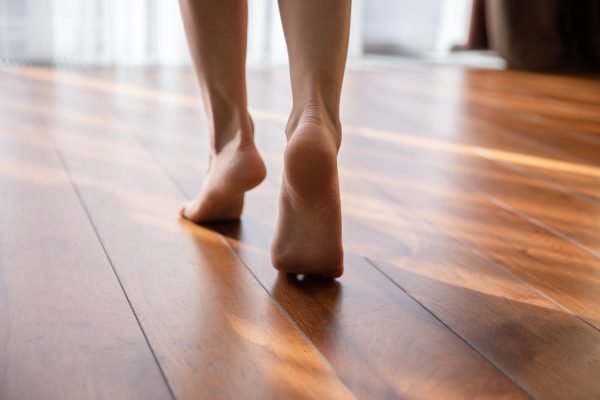
Toe walking
- How to do: Stand tall. Now transfer the body weight onto the toes & heels off the floor.
- Then walk on the toes which gives to you dynamic shin stretch.
- You can use the wall for support throughout the walk.
- Walk for 1-2 minutes.
Ankle ABC’s
- How to do: Moving the ankle in multiple directions is one way to slowly stretch the extensor hallucis Angus.
- Take a comfortable sitting position with the feet unsupported. Remove your shoes & socks.
- Slowly draw the alphabet in the air, leading with the big toe. Take as far as possible in each direction. Never allow your knee to move — all movement might come from your ankle.
- Every time the foot is pointed downward, you should feel a pulling sensation along the front of your shin.
- Repeat the alphabet 2-3 times on both legs.
Manual Toe Stretching:
- You can also use a towel to stretch the toes. Sit on the floor with the legs perfectly outstretched and a towel wrapped properly around your toes. Make sure that you hold the towel ends with your hands & pull the toes towards you. maintain yourself in this position for 20 to 30 seconds. You can also forgo the towel if you like & try pulling the toes by using your hands.
Toe Taps:
- This toe exercise helps to stretch the joint. As you sit in a comfortable chair, gently extend the big toe towards the ground as you try to point the other toes up. hold onto that position for about a second & then tap them lightly back down to the floor. Repeat this about 10-12 times & then reverse this process by gently pulling the big toe up as you keep the other toes on the floor.
Hammer Toe Finger Splint:
- The claw Toe Finger Splint is also referred to as “squeeze” & involves using the fingers for creating little splits between the toes for stretching them. Sit in a comfortable position & then bring one foot up & then place it right on your opposite thigh. Then slide the fingers gently in between the toes, gently pinching the fingers for squeezing the toes together. Repeat the exercise 12 times. If you like you can perform each toe simultaneously by putting one finger between them & pinching.
Rolls:
- This particular claw toe exercise involves tapping the toes gently on the floor from one side to the other. First, stand barefoot on some flat surface && try lifting all the toes off the ground, while making sure that you keep the heel planted. Now bring the toes gently down on the surface one by one, starting with the small & then ending with the big. Repeat the exercise 10 times & then move in the opposite direction.
Health Benefits of extensor digitorum longus stretching exercises:
There are many type benefits you might know:
- Reduce the risk of injury to calves, ankles & feet
- Reduced chance of getting tibialis anterior tendonitis
- Better ground clearance when walking to avoid tripping
- Reduce the risk of growing shin splints & stress fractures
- Fast-up recovery of shin splints.
- Increased athletic performance in sports where the ankle is “locked” like in soccer to kick a ball
- Increases the ankle range of motion. such as dorsiflexion,inversion, & adduction.
- It also maintains the medial arch of the foot.
- It also helps in the anticipatory postural adjustment part during gait beginning tibialis anterior perform knee flexion at the stance limb by causing forward displacement of the tibia.
- It also helps in eccentric deceleration of foot plantar flexion, pronation & eversion.
Strengthening exercise of extensor digitorum longus muscle
- Seated Elastic Band Exercise
- Cuff Weight Exercise
- Isometric Exercise
- Seated Calf Stretch
- Seated Toe Raises
- Wall Toe Raises
- Heel Walk
Seated Elastic Band Exercise
How to do it?
- For the Seated Elastic Band Exercise exercise, you need an elastic resistance band.
- To perform the Seated Elastic Band Exercise exercise you have to Sit on the floor with the leg extended in front of you. now Alternatively you can sit on a chair with the foot propped up on another chair.
- Wrap a resistance band over the ankle. Attach one end to a stable object like the leg of a table, & secure the other around the foot near the toes. It may be helpful to have the lower leg resting on a small pillow so the heel of the foot does not rub on the floor.
- To perform this exercise Pull the toes & foot up while keeping the knee extended. The ankle might be moved as you flex the foot up
- Pull the foot up as much as you can, & hold the end position for 2 seconds.
- Slowly relax back to the starting position.
- Do this exercise for 10-20 repetitions or until the anterior tibialis muscle tires & you can no longer flex the ankle up.
Cuff Weight Exercise
How to do it?
- For Cuff Weight Exercise you need a cuff weight.
- A cuff weight is a padded weight that you can wrap around the ankle. for Cuff Weight Exercise you have to sit in the chair & wrap a cuff weight around the toes. Make sure it is secure. Let the footrest on the floor, start this exercise by sitting with the cuff weight on the foot & then flexing the ankle so the foot & toes move up towards the knee.
- When the foot is flexed up, hold the position for 2 seconds,
- Gradually lower your toes back down to the initial position.
- Repeat the exercise for 10-20 repetitions.
Isometric Exercise
How to do it?
- Isometric exercise is a type of movement in which you push against an object you can not move. It is simple to do, & it can help strengthen the muscle in specific ranges of motion (ROM) in the ankle.
- To do isometric anterior tibialis strengthening you have to Sit in a chair & lie down.
- Cross 1 leg over the other with the affected leg on the bottom.
- Put the foot on top of the ankle you wish to exercise.
- Press the top of your weak foot into the sole of the other foot. Press down with the powerful foot to resist it. Remember, that movement occurs from the foot not from the ankle.
- Hold this position for 5 seconds, & then slowly release. Perform about 10 -15 repetitions of the exercise, 2 – 3 times a day. Isometric exercise can help to strengthen the muscles, but strength only occurs in the specific ROM in which you are exercising. That means that you might vary the position of the ankle when performing the exercise.
Seated Calf Stretch
How to do it?
- If your anterior tibialis muscle is weak, then you have difficulty flexing the foot. This means you have a shortened calf. A shortened calf will be a tight muscle, so stretching the calf may be necessary to fully correct the foot drop.
- To perform this exercise you have to Wrap a towel around the ball of the foot, & the knee should be extended.
- Pull the ends of the towel so your foot flexes up & stretches your calf.
- Hold the stretch for 15-30 seconds.
- Relax. Perform this 3 times.
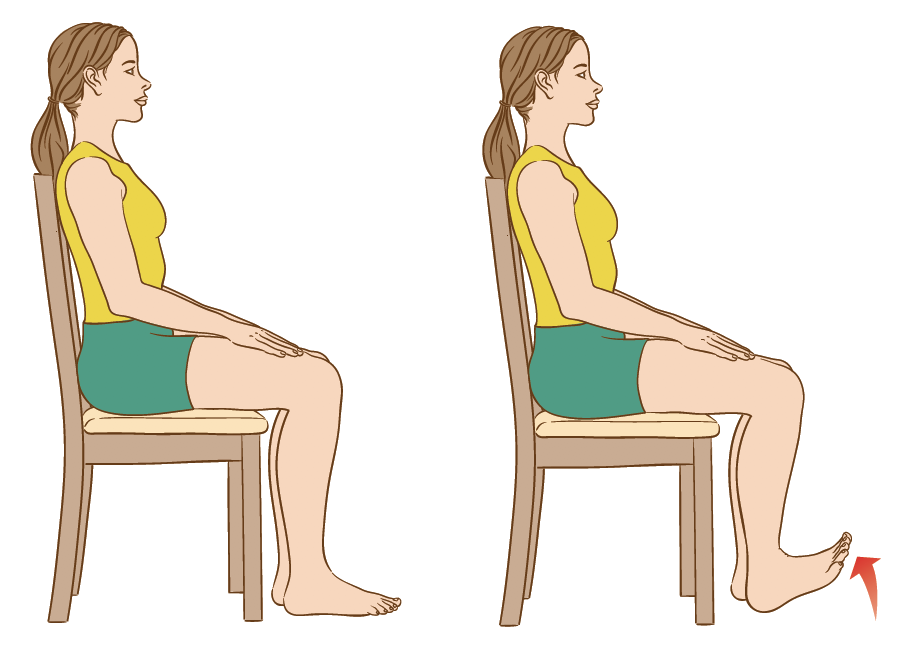
Seated Toe Raises
How to do it?
- For the Seated Toe Raises exercise, you have to Sit on a chair with the feet placed in front of you
- Now gradually raise your toes off of the ground.
- Hold for 2-5 seconds at the top
- Repeat for 2 -3 sets of 20-25 repetitions
Wall Toe Raises
How to do it?
- For the Wall Toe Raises exercise, you have to Stand 12-15 inches away with the back towards the wall with the feet hip-width apart.
- the knees might be slightly flexed then lean back into the wall.
- Elevate the toes off the floor & hold at the top for 2-4 seconds then lower the toes back to the floor.
- Repeat for 2-3 sets of 15-20 repetitions
Heel Walk
How to do it?
- For the Heel Walk exercise, you have to stand on both feet hip-width apart with no shoes on.
- Elevate the toes off the floor so that your heels are in contact with the floor.
- Walk forward while leaning back and placing weight on the heels.
- Do this for 30-40 seconds.
- Repeat this 2 to 3 times.
When did you not do the Extensor digitorum longus strengthening exercise?
- If you feel any pain during this exercise then do not do this exercise.
- If you are already suffering from foot & ankle pain.
- If your doctor advised you to take rest.
- If the lower limb bones are recently fractured.
Health benefits of Besides extensor digitorum longus strengthening exercise:
- Assist to Reduce the risk of injury to the calf, foot, & ankle joints.
- Assist to reduce the chance of getting Besides extensor digitorum longus tendonitis.
- Assist to increase ground clearance when walking to avoid tripping
- Reduce the risk of growing shin splints & stress fractures
- Speed up recovery of shin splints.
- Boost player performance in sports where the ankle is locked like in soccer to kick a ball
What are the safety & precautions of doing the Besides Extensor digitorum longus exercise?
There are some safety measures you require to look for:
- Don does not bounce during the stretch. it causes injuries to the muscles. Such as strain.
- Never overstretch a Besides extensor digitorum long muscle.
- Do not perform it so many times, it causes fatigue to the muscle. You might use a suggested time of repetition
- The holding time of the stretch should be recommended by your therapist which is normally 30-60 seconds.
- Never perform a stretch on the prior injured part of the body. Such as fractures, sprains, etc.
- Never stretch cold muscles, it causes pain. stretch it once you warm up the muscle.
FAQ
The extensor digitorum longus muscle is situated at the front of the leg & is adjacent to the peroneus brevis muscle & the tibialis anterior muscle. This wing-shaped muscle works to extend the foot at the ankle, along with the 4 smallest toes.
The extensor digitorum longus is one of four muscles in the anterior compartment of the lower leg. The other muscles in the front compartment include the tibialis anterior, extensor hallucis longus, & peroneus (fibularis) tertius. extensor digitorum longus muscle is the most lateral muscle in the anterior compartment.
The tear of the extensor digitorum longus & its fascia is a very rare acute ankle injury. Although acute inversion injuries of the ankle commonly result in a sprain of the lateral ligaments, most generally, the anterior talofibular ligament, injuries to tendinous structures & eversion muscles may also be associated.
The important symptom of extensor tendonitis in the foot is pain on the top of the foot. It is often right where the shoelaces are. You may feel this pain while you are running and walking. Sometimes, there is visible swelling & a bump on the extensor tendon that is injured and inflamed.
The extensor digitorum longus is stretched by plantarflexing & inverting the foot. A wall & table can be used for balance. The extensor digitorum longus is stretched by plantarflexing & inverting the foot.
Sit down in a cross-legged position & put the ball beneath the muscle. Apply pressure on the foot using the hands, but only if you require additional pressure. If you are inadequate to sit completely cross-legged, you may sit bending only the leg you are massaging.

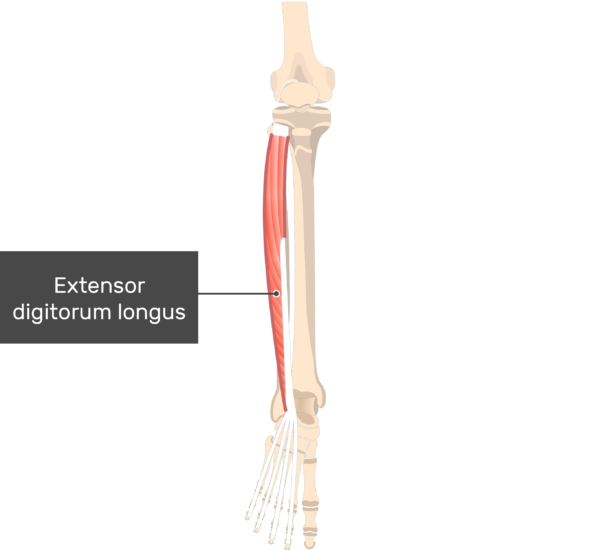
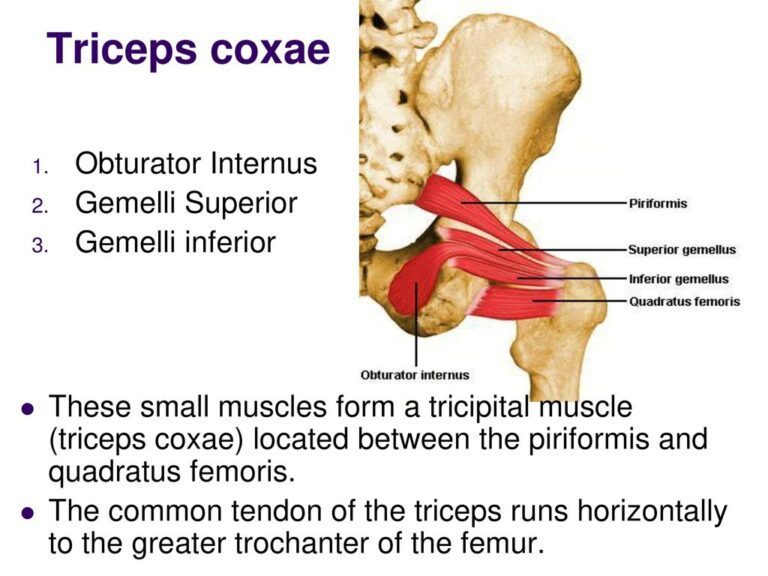
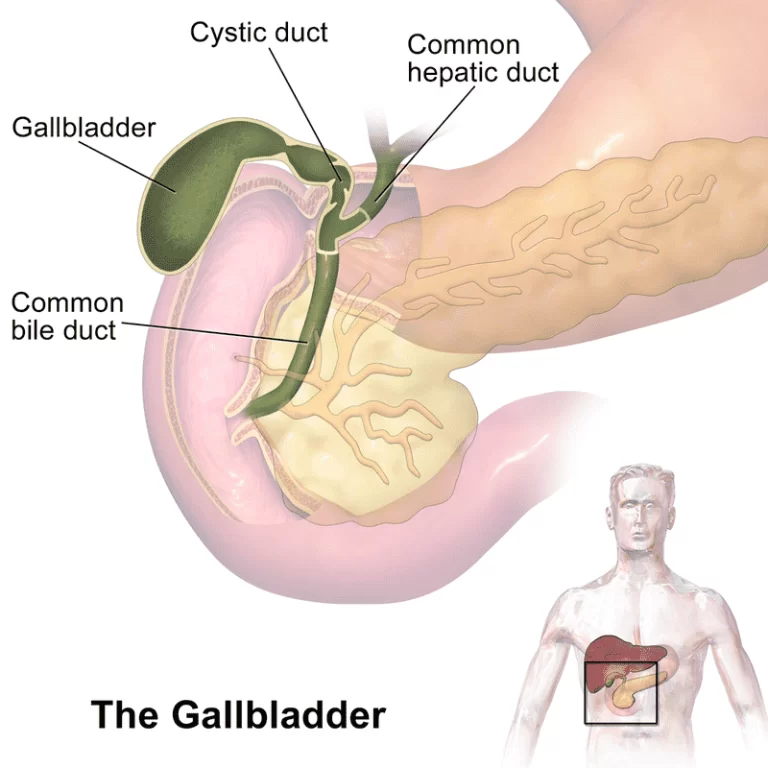
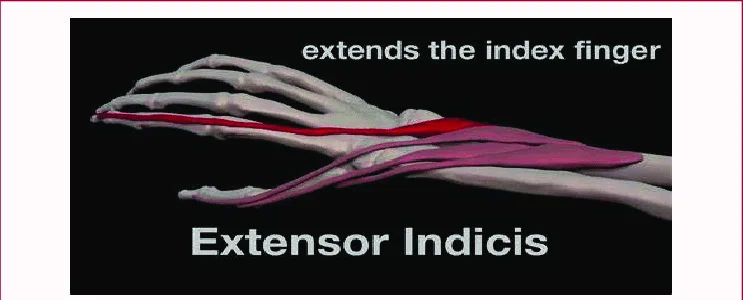
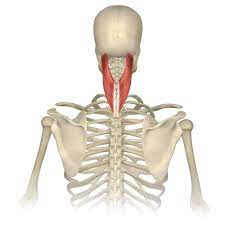
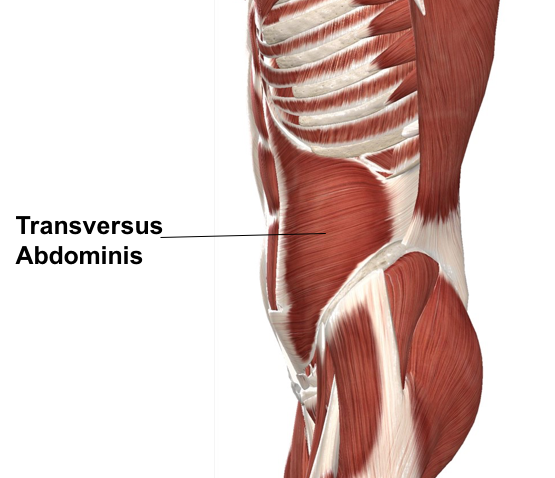
2 Comments